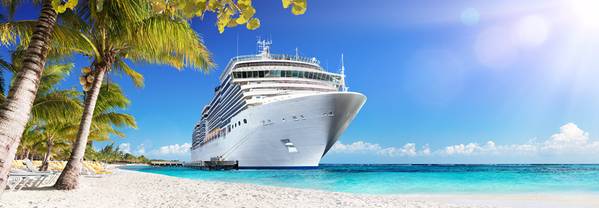
The Florida-Caribbean Association (FCCA), a cruise and destination trade group, has announced that the 2023-2024 cruise year brought record economic contributions to the region.
According to the study released by Business Research & Economic Advisors (BREA), cruise tourism generated $4.27 billion in direct cruise tourism expenditures, about 27% higher than the record set by the previous study in 2018, in the 33 participating destinations.
Key findings include:
• Cruise tourism generated $4.27 billion in expenditures, up 27% compared to the last study in 2018 and the previous record.
• 94,027 jobs were supported by the industry, up 19% compared to the last study, paying a total employee wage income of $1.27 billion.
• Destinations welcomed 29.4 million onshore visits from cruise passengers, with an average spend of $104.36, generating a total of $3.07 billion.
• Destinations also welcomed 3.9 million onshore visits from crew, with an average spend of $58.78, generating a total of $229.5 million.
• Cruise lines spent $968.3 million, an average of $29.3 million per destination.
• The 33.3 million passenger and crew visits represent a 13% increase compared to the previous study, and the 31 common destinations in the 2018 and 2024 studies experienced a 17% increase in passenger visits.
• Average per passenger spend increased for 26 of the 31 common destinations, and 14 destinations recorded average spend rates above $100 per passenger (up from 12 in 2018).
• On average, a single transit cruise call with 4,000 passengers and 1,640 crew generates $369,100 in passenger and crew spending alone: $339,800 and $29,300, respectively.
The study measured direct spending impacts through passenger surveys and crew surveys; cruise line spending for services and provisions; port revenues and employment generated by cruise ship calls. Measurement of economic impacts was calculated by collecting data from local government agencies, regional development agencies and international economic agencies to evaluate impacts on employment, wages, port fees and taxes.
The study’s measure of cruise tourism expenditures did not include indirect benefits of cruise tourism, including supplies purchased by tour operators, restaurants and port authorities, though the estimates of these expenditures served as the basis for total employment and wage impacts. The study also did not account for other indirect benefits, such as spending from cruise passengers who return as stay-over guests; nor did the study measure other methods of cruise line spending that benefit destinations, including NGO partnerships and marketing.
The 33 participating destinations with total cruise tourism expenditures (in $US Millions) were:
Antigua & Barbuda ($89.0); Aruba ($133.2); The Bahamas ($654.8); Barbados ($83.5); Belize ($88.6); Bonaire ($33.4); British Virgin Islands ($85.7); Cayman Islands ($161.5); Colombia ($49.9); Costa Maya, Mexico ($187.9); Costa Rica ($32.2); Cozumel, Mexico ($483.1); Curacao ($93.3); Dominica ($20.9), Dominican Republic ($251.4); Ensenada, Mexico ($74.9); Grenada ($22.4); Guadeloupe ($46.1); Honduras ($180.4); Jamaica ($197.8); Key West ($55.4); Martinique ($42.2); Mazatlán, Mexico ($34.1); Panama ($114.0); Progreso, Mexico ($25.8); Puerto Rico ($201.9); St. Kitts & Nevis ($113.1); St. Lucia ($72.7); St. Maarten ($237.8); St. Vincent ($19.3); Trinidad ($5.4); Turks and Caicos ($116.1); and the United States Virgin Islands ($258.1).



